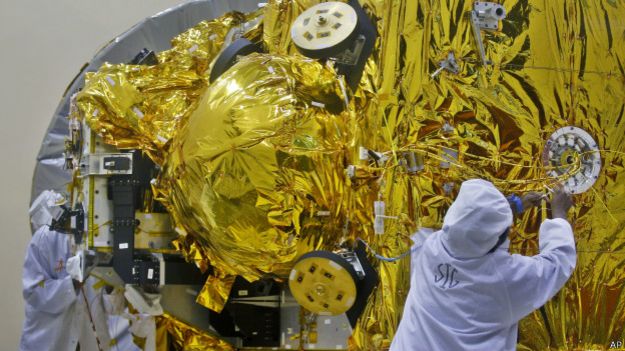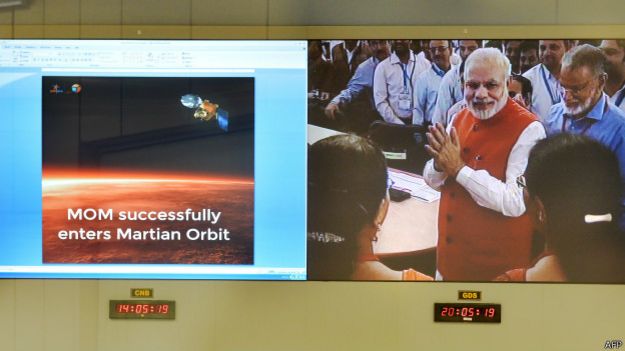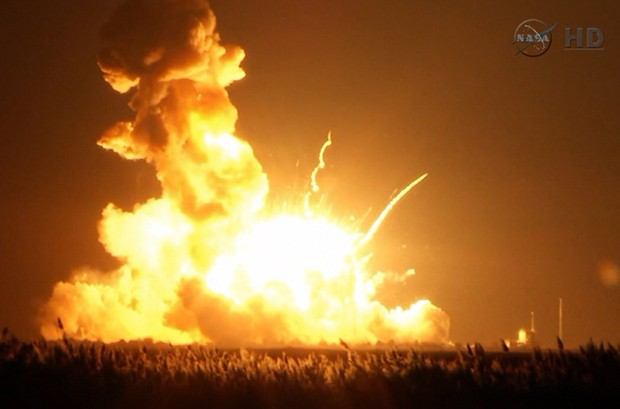Boeing spacecraft to move into KSC's shuttle hangars
Boeing engineers are outfitting two decommissioned space shuttle hangars at the Kennedy Space Center for the U.S. Air Force's secretive X-37B space plane, NASA announced Wednesday.
The announcement in a NASA press release confirmed plans to convert the shuttle hangars to house two reusable Air Force space planes built by Boeing, which acknowledged in January it was modifying one of the facilities for the X-37B program.
"NASA's Kennedy Space Center in Florida has entered into an agreement with the U.S. Air Force's X-37B Program for use of the center's Orbiter Processing Facility Bays 1 and 2 to process the X-37B Orbital Test Vehicle for launch," the NASA press release said.
The processing facilities, known as OPFs, are located northwest of the spaceport's massive Vehicle Assembly Building that was used to assemble Saturn 5 moon rockets and space shuttles for liftoff.
NASA built three OPFs to each accommodate one space shuttle orbiter. OPF bays 1 and 2 sit next to each other, connected by interior corridors, while OPF bay 3 was constructed nearby across a tow-way from the other shuttle hangars.
Officials decided NASA did not need the shuttle hangars for the agency's future plans, which include a heavy-lifting rocket and the Orion crew capsule that will use the Apollo- and shuttle-era VAB and launch pad 39B for missions to an asteroid, Mars and other deep space destinations.
"Kennedy is positioning itself for the future, transitioning to a multi-user launch facility for both commercial and government customers, while embarking on NASA's new deep space exploration plans," said Robert Cabana, director of the Kennedy Space Center. "A dynamic infrastructure is taking shape, designed to host many kinds of spacecraft and rockets."
NASA has handed over launch pad 39A, the departure point for the Apollo moon landings and the first and last space shuttle missions, to SpaceX for refurbishment to support Falcon 9 and Falcon Heavy rocket launches.
With OPF bays 1 and 2 claimed for the Air Force's X-37B program, Boeing will occupy all three former shuttle hangars at KSC.
Space Florida, a state economic development agency focused on the space industry, has leased OPF-3 from NASA after Boeing agreed to use the building for assembly of the company's commercial CST-100 spaceship designed to ferry astronauts to the International Space Station.
Boeing's disclosure in January of the deal to convert OPF-1 said Space Florida also provided project funding that helped attract the X-37B program to KSC.
While details of the Air Force space plane's activities and budget are classified, signs of the program's presence at KSC were visible months ago.
A painted door on OPF-1 heralds the building as "Home of the X-37B."
The acquisition of the OPFs will allow the Air Force to relocate landings of the X-37B space plane -- and maintenance between missions -- from California to Florida, where the vehicles are launched.
The Air Force has flown three missions with the X-37B, also known as the Orbital Test Vehicle, since 2010.
The two Boeing-built space planes are about one-quarter the size of a space shuttle orbiter, measuring 29 feet long, nearly 10 feet high, and with wing spans of about 15 feet. They can stay in space much longer than a space shuttle by using solar power.
The Air Force has not revealed details on the X-37B's operations in orbit. Pentagon officials have said the program is testing reusable space technologies and could serve as a platform for experiments.
The spacecraft has a payload bay about the size of the bed of a pickup truck.
The three X-37B missions to date have blasted off from Cape Canaveral's Complex 41 launch pad -- a few miles away from KSC's shuttle processing hangars -- aboard United Launch Alliance Atlas 5 rockets and deployed in orbit several hundred miles above Earth.
The first two missions landed on a runway at Vandenberg Air Force Base, Calif., and the third flight -- a re-launch of the X-37B vehicle that flew the first mission -- is still in orbit.
Vandenberg is the primary landing site for the ongoing X-37B flight, which has surpassed 600 days since launch, an Air Force spokesperson said in July.
The X-37B program "is leveraging previous space shuttle investments and the Orbiter Processing Facility (OPF) facilities to conduct recovery and refurbishment activities after landing," Air Force Maj. Eric Badger, a military spokesperson based in the Pentagon, said in a written response to questions submitted by Spaceflight Now.
"Starting as early as Mission 4, the OTV program plans to be able to land at KSC's Shuttle Landing Facility (SLF) runway, quickly tow over to OPF-1, undergo refurbishment and prepare for re-launch," Badger said. "Vandenberg Air Force Base will continue as an active landing site for the OTV program."
The Air Force has not said when the X-37B space plane's fourth mission is scheduled.
X-37B program officials conducted testing at KSC's Shuttle Landing Facility to demonstrate the space plane could return to Earth on the three-mile-long runway, NASA said in a statement.
Boeing says it has an agreement with NASA to permit X-37B landings on the shuttle runway when needed.
Upgrades to the OPFs for the X-37B program should be complete in December, according to NASA.
A NASA spokesperson referred questions on the terms of the agreement to the U.S. Air Force, which did not respond Wednesday.
Follow Stephen Clark on Twitter: @StephenClark1
 http://spaceflightnow.com/news/n1410/08 ... DcrVE10wuU
http://spaceflightnow.com/news/n1410/08 ... DcrVE10wuU














